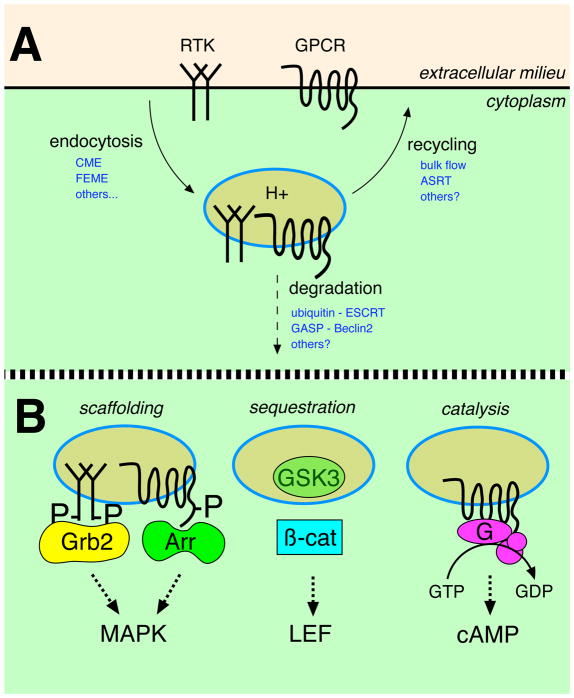Figure 1. Simplified schematic of endocytic trafficking itineraries relevant to signaling receptors and proposed mechanisms of endosome-based signal activation.
(A) Signaling receptors such as receptor tyrosine kinase (RTK) growth factor receptors and members of the large G protein-coupled receptor (GPCR) family can internalize by various routes, including clathrin-mediated endocytosis (CME), fast endophilin-mediated endocytosis (FEME) and probably others. Internalized receptors are sorted by various mechanisms, a subset of which are indicated in the diagram using abbreviations explained in the text. These mechanisms determine the degree to which internalized receptors are delivered to lysosomes (degradation) or returned intact to the plasma membrane (recycling), divergent itineraries that down-regulate or sustain / resensitize net cellular signaling responsiveness, respectively. (B) Three biochemical principles that are currently thought to underlie signaling from endosomes. Scaffolding: Growth factor receptors can engage signaling adaptors such as Grb2 in the endosome limiting membrane, driving downstream activation of MAP kinase (MAPK) modules. GPCRs likely signal from endosomes in an analogous manner, except using arrestins or beta-arrestins (Arr) as alternate signaling scaffolds. Sequestration: Wnt / Wingless signaling is proposed to occur from endosomes through physical sequestration of GSK3 into the endosome lumen. This reduces cytoplasmic GSK3 activity, stabilizing and promoting cytoplasmic accumulation of beta-catenin (β-cat) that functions as a downstream mediator of transcriptional signaling through binding to the transcription factor LEF. Catalysis: GPCRs can activate heterotrimeric G proteins (G) from the endosome limiting membrane, which promotes downstream signaling through production of cytoplasmic second messenger molecules such as cyclic AMP (cAMP).

